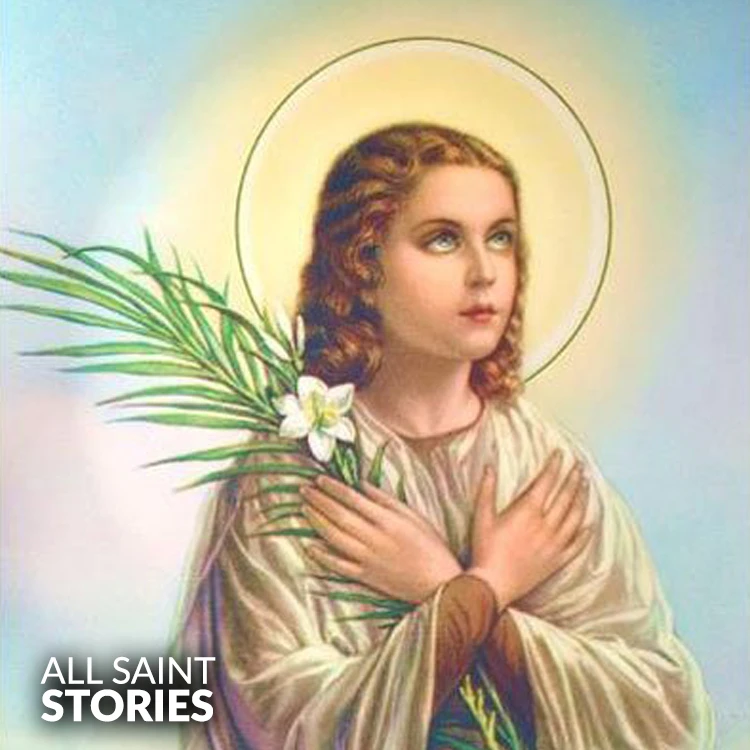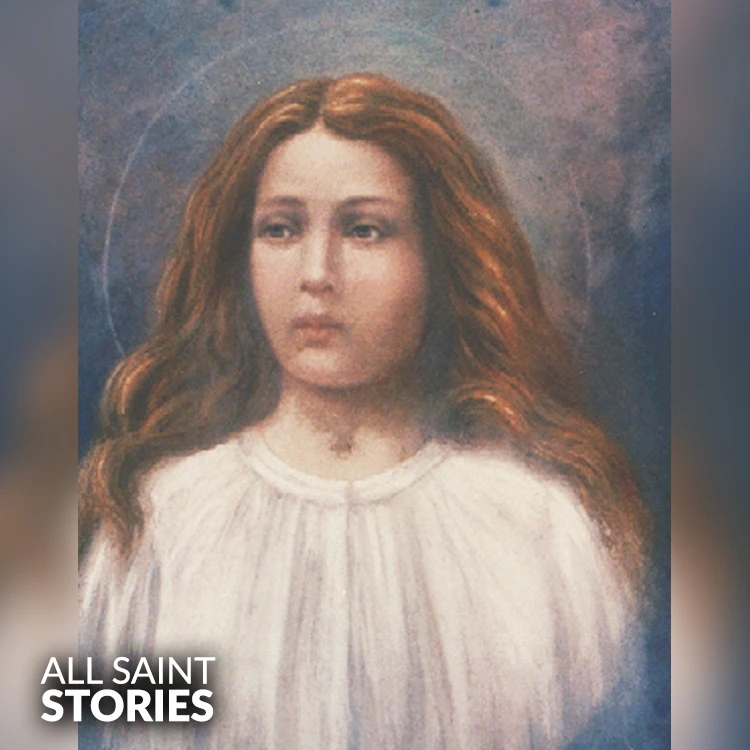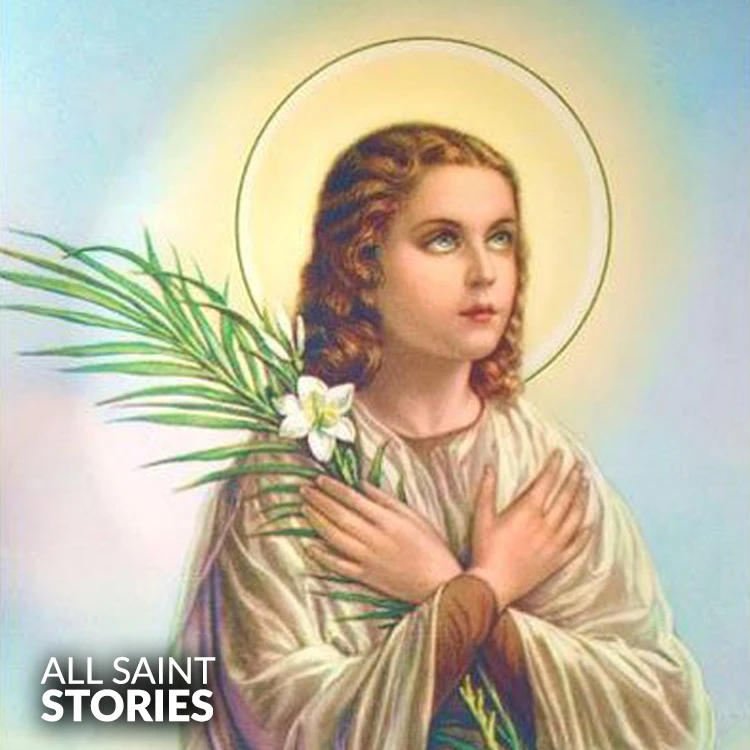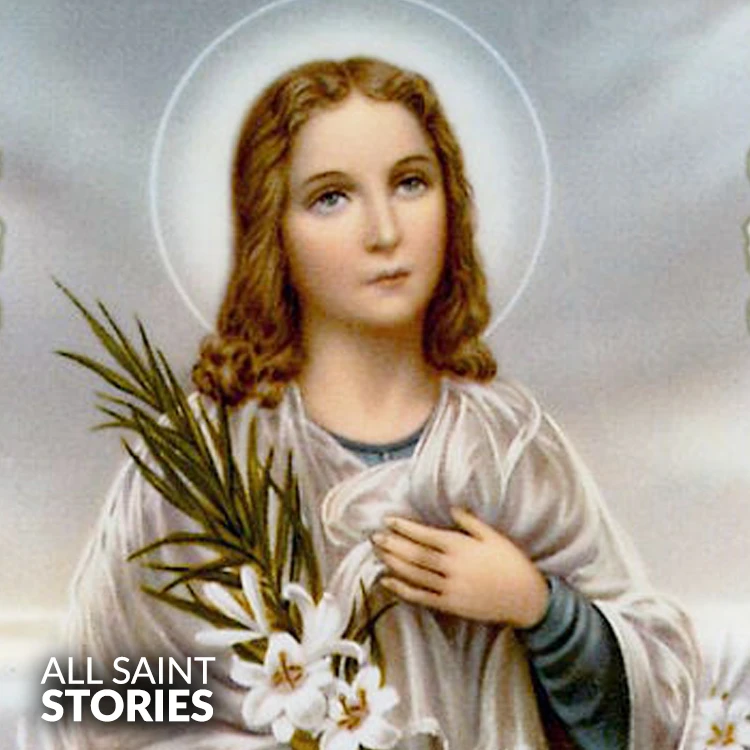
Saint Maria Goretti was a young martyr who died defending her purity and forgave her attacker before her death, embodying forgiveness and compassion. She was canonized in 1950 and is the patron saint of youth, purity, and victims of violence.
Her farmworker father moved his family from Corinaldo, in the province of Ancona, to Ferrier di Conca, near Anzio, on October 16, 1890. Maria's mother had to battle to feed her children when he died of malaria.
Maria's mother, brothers, and sisters toiled in the fields while she cooked, sewed, cleaned, and looked after her younger sister Teresa. Despite their challenging circumstances, the family was exceptionally close and loved God.
On July 5, 1902, Maria was sewing her 18-year-old brother or neighbor - it's unclear which - Alessandro's shirt outside her house while he threshed beans in the barnyard. Alessandro surprised her and snatched her from her stairs as she was concentrating on her stitching. Maria shouted out that raping her was a horrible evil and warned him that he would go to hell.
She struggled with Alessandro and yelled when he persisted "No way! It's a heinous crime! It's not what God wants!" Alessandro choked her as a result of her statements, and she declared that she would rather die than succumb. Alexander grabbed out a knife and stabbed her eleven times after hearing her remarks. He stabbed her three more times as she tried to reach the door, then escaped.
Teresa began crying when she awoke to the sounds of her sister's sobbing. When Maria's family arrived home, they discovered her bleeding on the floor. They whisked her away to Nettuno's nearest hospital, where she had surgery without anesthetic.
Unfortunately, the surgeon was unable to help her due to the severity of her wounds. "Maria, think of me in Paradise," the man said halfway through the surgery.
"Well, who knows which of us is going to be there first?" she replied as she lay on the table, looking up at him.
"You, Maria," the surgeon said, as she didn't comprehend how bad her position was.
"Then I shall gladly think about you," she answered. She also expressed concern for her mother's well-being. Maria forgave Alessandro the next day and expressed her desire to see him in Heaven with her. She died that day, holding a cross to her chest and gazing at a picture of the Virgin Mary.
Alexander was apprehended and questioned shortly after Maria's relatives discovered her. He admitted Maria was a physical virgin since he couldn't assault her, and he received a thirty-year sentence. He further stated that he had tried to get her to go to bed with him on multiple times in the past, as well as attempting to rape her before. Alessandro refused to accept responsibility for his acts until he had a dream about being in a garden. Maria arrived and presented him the flowers, which instantly burned in his hands. He was a different person when he awoke. He confessed his guilt and pledged to live a life of repentance. When he was finally released 27 years later, he went straight to Maria's mother and pleaded for her forgiveness, which she granted, stating, "If my daughter can forgive him, who am I to refuse forgiveness?"
On April 27, 1947, Pope Pius XII beatified Maria Goretti in a ceremony at Saint Peter's Basilica.
Maria was made a saint three years later, on June 24, 1950, and Alessandro was present in the St. Peter's congregation to witness her canonization. He eventually joined the Order of Friars Minor Capuchin as a lay-brother, living in a monastery and working as the receptionist and gardener until his death. The most crucial components of Saint Maria's narrative are how she forgave her attacker - her compassion for her enemy reaching even beyond death - and the miracle her forgiveness brought about in his life.
The crypt of the Basilica of Nostra Signora delle Grazie e Santa Maria Goretti in Nettuno houses Saint Maria's body. Despite claims to the contrary, her body has been found to be corrupt. Her body is housed in a statue beneath the altar, which has been mistaken for her entire body.
Saint Maria is frequently shown with flowing hair, dressed in white or agricultural attire, and carrying lilies in her hands.





 English
English
 Italian
Italian
 French
French
 Spanish
Spanish
 Malayalam
Malayalam
 Russian
Russian
 Korean
Korean
 Sinhala
Sinhala
 Japanese
Japanese
 Arabic
Arabic
 Portuguese
Portuguese
 Bantu
Bantu
 Greek
Greek
 German
German
 Dutch
Dutch
 Filipino
Filipino